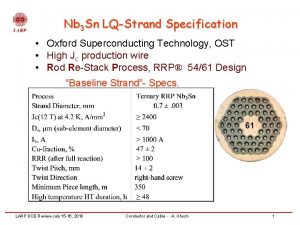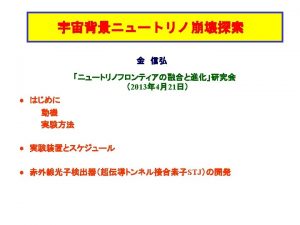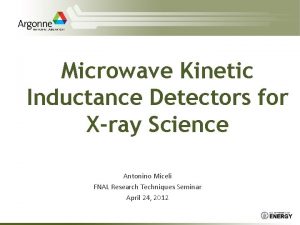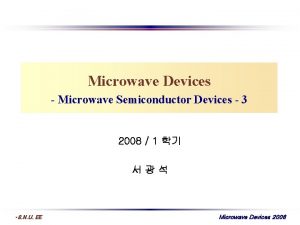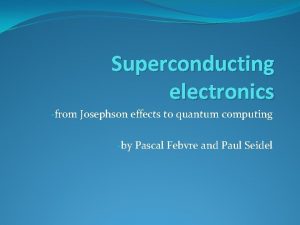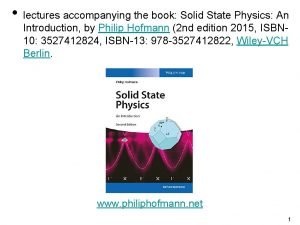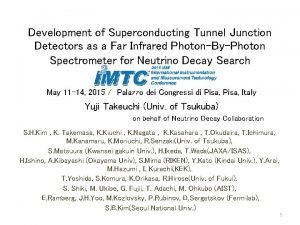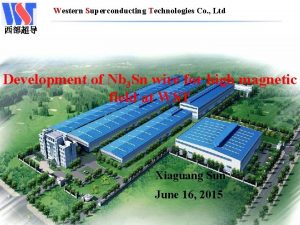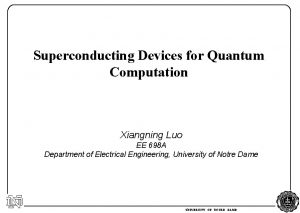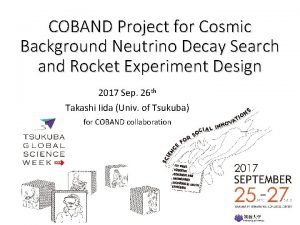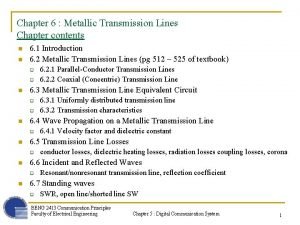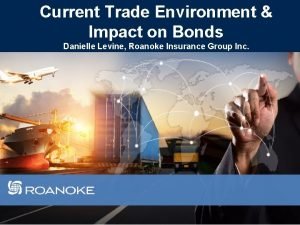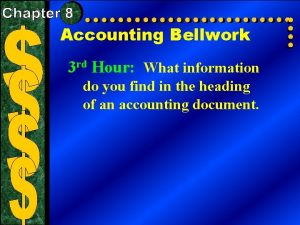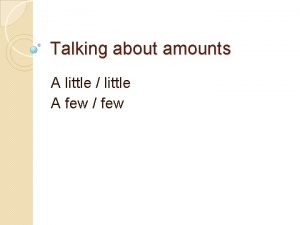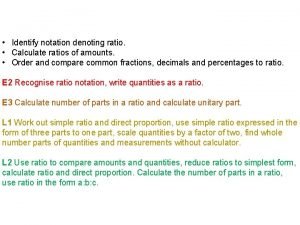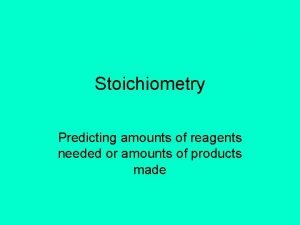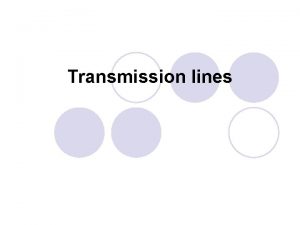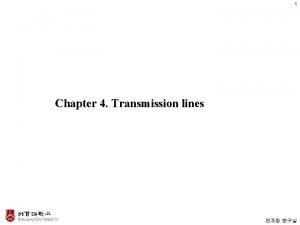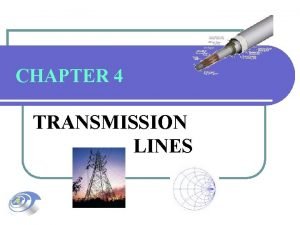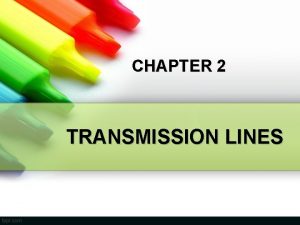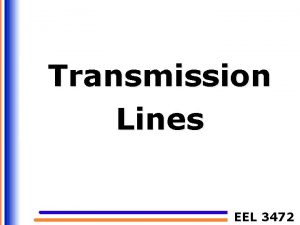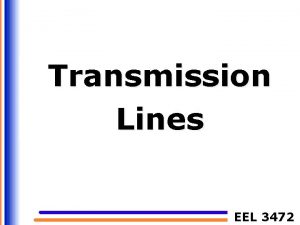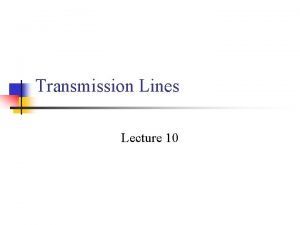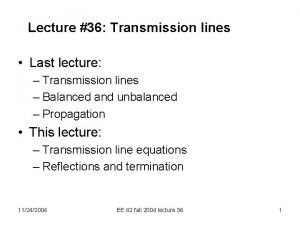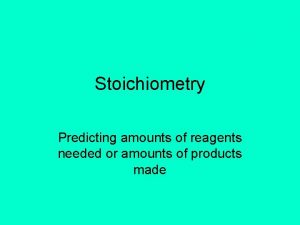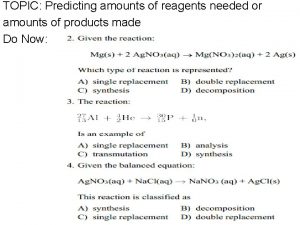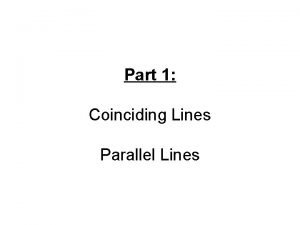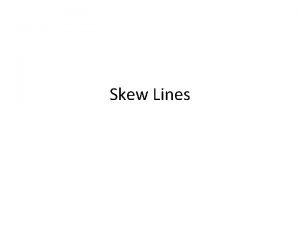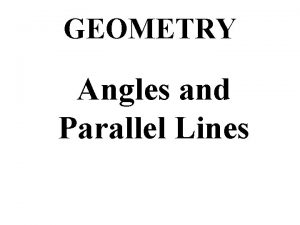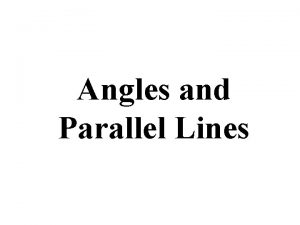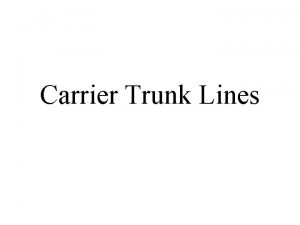Superconducting Lines for the Transmission of Large Amounts




















- Slides: 20

Superconducting Lines for the Transmission of Large Amounts of Power over Great Distances Garwin-Matisoo Revisited 40 Years Later! Paul M. Grant Visiting Scholar in Applied Physics, Stanford University EPRI Science Fellow (retired) IBM Research Staff Member Emeritus Principal, W 2 AGZ Technologies w 2 agz@pacbell. net www. w 2 agz. com Stanford-Wisconsin Workshop on Coated Conductors 24 -26 April 2006 Palo Alto, CA www. w 2 agz. com/macdavid. htm

Generational Axioms of History • There is nothing new under the sun Ecclesiastes 1: 9 -14 • What’s past is prologue The Tempest, by Bill S. • Those who cannot remember the past are bound to repeat it George Santayana • History is more or less bunk Henry Ford • I can’t think about tomorrow. . . I’m as lost as yesterday Tomorrow, by Bob Seger

Submitted 28 February 1966 • ac Cables: 760 MVA (3 ), 275 k. V, 1600 A – Be – Al – Nb 77 K 20 K 4 K (a “soft” superconductor!) • Objective: Efficiency, not increased capacity!


HC 1 = 0. 16 T Fault I = 40 k. A Cable Properties Metal T (K) ( ×cm) Cu 340 2 10 -6 6. 0 46, 500 Be 77 2 10 -8 6. 0 460 Al 20 3 10 -9 6. 0 470 Nb 4 0 10. 4 0 Outer Loss Diameter (W/km) (cm)

Cost of “Extra” Generation to Offset I 2 R Losses (CEGB, 1965): 220 £/kw

Wilkinson’s Conclusion (1966) • “. . . only niobium has any hope of defraying its refrigeration costs by savings in conductor material” • “But its impracticably large core diameter” (10. 4 cm rules out Type I superconductors) • A Type II superconductor with JC = 106 A/cm 2 at a diameter of 6 cm would quench under a fault current of 40 k. A • “Such a hazard is clearly unacceptable. ”

Submitted 24 June 1966 Rationale: Huge growth in generation and consumption in the 1950 s; cost of transportation of coal; necessity to locate coal and nuke plants far from load centers. Furthermore, the utilities have recently become aware of the advantages of power pooling. By tying together formerly independent power systems they can save in reserve capacity (particularly if the systems are in different regions of the country), because peak loads, for example, occur at different times of day, or in different seasons. To take advantage of these possible economies, facilities must exist for the transmission of very large blocks of electrical energy over long distances at reasonable cost.

Specs • LHe cooled • Nb 3 Sn (TC = 18 K) – JC = 200 k. A/cm 2 – H* = 10 T • Capacity = 100 GW – +/- 100 k. V dc – 500 k. A • Length = 1000 km

• • Refrigeration Spacing G-L Separator Distance Booster Pump Intervals Vacuum Pump Spacing 20 km 500 m

Super. Tie • 77 or 20 K • JC = 15 k. A/cm 2 • H = 0. 8 T

High-Amplitude Transient (ac) Losses According to Bean Where: In = current amplitude for harmonic n, and f = frequency for harmonic n (here 60 Hz) In (k. A) WH (W/m) 500 (G-M) 6, 000 100 (Super. Tie) 240, 000

Low-Amplitude Transient (ac) Losses According to Bean 1% Ripple JC(k. A/cm 2) R (cm) 15 1 I (A) F (Hz) H (W/m) 1000 360 1

Hotel California, 8 January 2006

“Twin Californias”

Current Harmonics for “Twin Californias” Diurnal Trading

“Twin California” Trading Losses Harmonic, n In (k. A) f (μHz) WH (k. W/5000 km) 1 12. 4 11. 6 1. 8 2 12. 8 23. 2 3. 8 3 8. 31 34. 7 2. 4 4 3. 67 46. 3 6. 2 Total No Problem! 8. 7

“Sanity Check” • Worst Case: Assume a “toleration loss” no larger than 1 W/m, then the entire Super. Tie could be reversed in only 2 hours. • The “fastest” change would be ~ 10 A/s between 5 and 6 PM EST. Compare with 1% ripple on 100 k. A at the 6 th harmonic of 60 Hz which is 720, 000 A/s!

5000 km Super. Tie Economics Base Assumption: C/P “Gen X” = $50/k. A×m Cost of Electricity ($/k. Wh) 0. 05 Annual Value Line Losses of Losses on in 10 GW Conventional Transmission Line @ 50% (%) Capacity (M$) 5% 110 Additional Capital Costs for HTSC and Refrigeration (M$) FRB Discount Rate (%) Period for ROI (Years) 52, 574 5. 5 % 62 “Deregulated Electricity” will not underwrite this ROI, only a “public interest” investment analogous to the Interstate Highway system makes sense

Garwin-Matisoo Bottom Line This is not an engineering study but rather a preliminary exploration of feasibility. Provided satisfactory superconducting cable of the nature described can be developed, the use of superconducting lines for power transmission appears feasible. Whether it is necessary or desirable is another matter entirely!
 Oxford superconducting technology
Oxford superconducting technology Superconducting tunnel junction
Superconducting tunnel junction Superconducting energy gap
Superconducting energy gap Superconducting tunnel junction
Superconducting tunnel junction Superconducting electronics
Superconducting electronics Superconducting ring
Superconducting ring Superconducting tunnel junction
Superconducting tunnel junction Western superconducting
Western superconducting Superconducting devices in quantum optics
Superconducting devices in quantum optics Coband
Coband Youtube.com
Youtube.com Metallic transmission lines
Metallic transmission lines What are the 5 steps in crime scene investigation
What are the 5 steps in crime scene investigation Calculating customs bond amounts
Calculating customs bond amounts Problem 8-3 extending amounts across the work sheet
Problem 8-3 extending amounts across the work sheet Talking about amounts
Talking about amounts Ratio of amounts
Ratio of amounts How to determine if a single replacement reaction occurs
How to determine if a single replacement reaction occurs Vad är referatmarkeringar
Vad är referatmarkeringar Karttecken tät skog
Karttecken tät skog Fimbrietratt
Fimbrietratt
